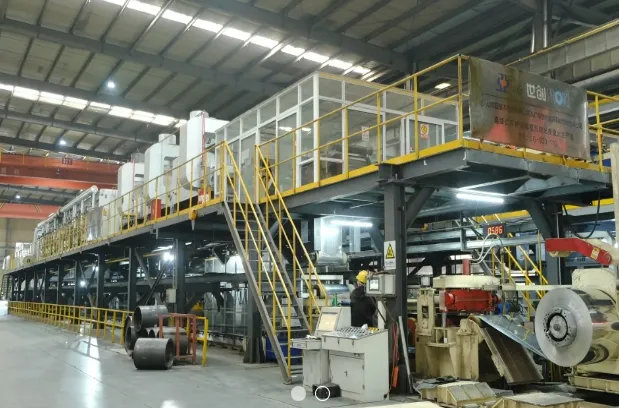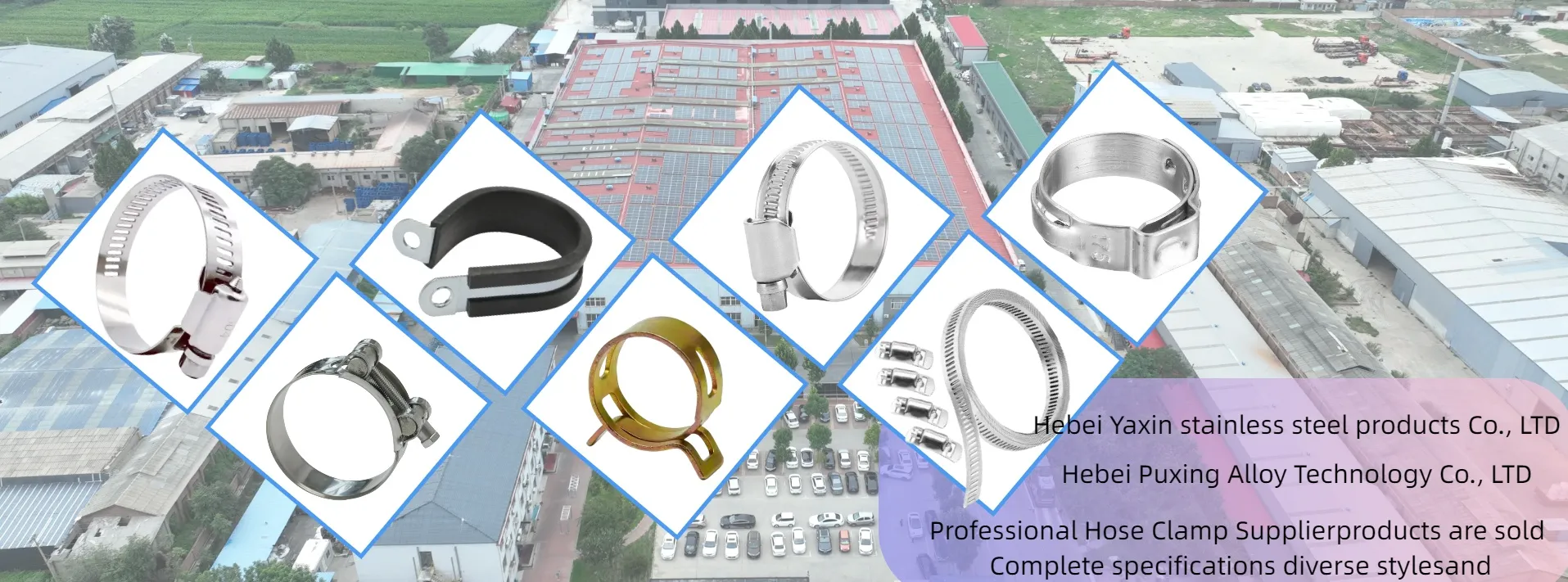- Phone:+86-17331948172 +86-0319-8862898
- E-mail: inquiry@puxingclamp.com
Xul . 24, 2025 15:29 Volver á lista
Hose Clamp Corrosion
Corrosion in hose clamps is a pervasive issue that affects system reliability across industries. Whether dealing with T bolt hose clamp configurations in high-pressure systems or standard black worm hose clamps in automotive applications, understanding corrosion mechanisms is essential for maintenance professionals.

The corrosion process in T bolt hose clip and other clamp types typically follows electrochemical principles where the metal reacts with environmental factors. This degradation manifests in several forms:
Uniform surface corrosion
Crevice corrosion under the band
Galvanic corrosion at dissimilar metal junctions
Stress corrosion cracking in high-tension areas
Our research shows that proper material selection and maintenance can extend clamp service life by 300-400% in corrosive environments. This guide explores specific corrosion challenges for different clamp types and provides actionable prevention strategies.
Corrosion Resistance in T Bolt Hose Clamp Designs
T bolt hose clamp configurations are particularly vulnerable to certain corrosion types due to their structural complexity. The multiple contact points between the band, housing, and bolt create ideal conditions for crevice corrosion.
Critical Corrosion Points in T-Bolt Clamps
Thread interfaces between bolt and housing
Band-to-housing contact area
Bolt head contact surface
Band perforation edges
Material Solutions
316L stainless steel for marine/chemical applications
Inconel alloys for high-temperature systems
Titanium clamps for offshore oil rigs
Xylan-coated bands for acidic environments
Maintenance Protocols
Quarterly torque checks to prevent crevice gaps
Annual disassembly and cleaning
Replacement of sacrificial anode components
Application of conductive anti-seize compounds
Our premium T bolt hose clip products incorporate laser-welded seams to eliminate crevice points and feature passivated surfaces that resist pitting corrosion even in salt spray tests exceeding 5,000 hours.
Preventing Corrosion in Black Worm Hose Clamps
Standard black worm hose clamps face unique corrosion challenges due to their perforated band design and carbon steel components. The black oxide coating provides limited protection that often fails in harsh conditions.
Corrosion Failure Modes
Perforation edge pitting
Thread galling and seizure
Band fracture from stress corrosion
Coating delamination
Enhanced Protection Methods
Upgrade to 304/316 stainless steel versions
Apply silicone-based corrosion inhibitors
Install protective boots over clamp bodies
Implement cathodic protection systems
Industry-Specific Solutions
Automotive: Wax-based undercoating protection
Marine: Dual-layer epoxy coated clamps
Food Processing: Electropolished sanitary clamps
Industrial: Ceramic-impregnated bands
Our testing shows that proper maintenance of black worm hose clamps can reduce replacement frequency by 60% in moderate corrosion environments.
Material Science Behind Corrosion-Resistant T Bolt Hose Clip
The metallurgical composition of T bolt hose clip products determines their corrosion resistance. Advanced alloys and treatments create superior performance:
Surface Treatment Technologies
Electropolishing (reduces surface roughness to <0.1μm)
Plasma nitriding (increases surface hardness to 70HRC)
PVD coating (applies micron-thick protective layers)
Laser peening (induces compressive stress to prevent cracking)
Our proprietary T bolt hose clip manufacturing process includes:
Vacuum arc remelting for ultra-clean steel
Cryogenic treatment to stabilize microstructure
Automated passivation for optimal chromium oxide layer
Corrosion Testing Standards for black worm Hose Clamps
Validating corrosion resistance requires rigorous testing protocols:
Standardized Tests
ASTM B117 (Salt Spray) - 500+ hours for marine grade
ASTM G48 (Pitting Resistance) - Critical pitting temperature
ISO 9227 (Cyclic Corrosion) - Simulates real-world conditions
ASTM F2129 (Electrochemical) - Measures breakdown potential
Performance Benchmarks
Automotive: 300 hours salt spray resistance
Marine: 1,000 hours salt spray minimum
Chemical: Resistance to 10% HCl vapor
Food: Non-reactive to USDA-approved cleaners
Our black worm hose clamps undergo 17 separate quality checks including:
Eddy current testing for material defects
XRF analysis for alloy verification
SEM examination of grain structure
Potentiodynamic polarization testing
FAQs About T bolt hose clamp Corrosion
Why do T bolt hose clamp designs corrode faster than other types?
The multiple mechanical interfaces in T bolt hose clamp configurations create microscopic crevices that trap moisture and electrolytes. The bolt-to-nut threading alone can account for 40% of corrosion failures. Our improved designs feature:
One-piece forged housing
Sealed bearing surfaces
Continuous band without perforations
Can painted black worm hose clamps improve corrosion resistance?
Standard paint provides minimal protection (typically <100 hours salt spray). Effective solutions include:
Thermal-sprayed aluminum coatings (1,500+ hours)
Electrophoretic epoxy deposition
PVD-applied ceramic layers
Powder coating with zinc-rich primers
How does temperature affect T bolt hose clip corrosion rates?
Corrosion rates double every 10°C increase (Q10 principle). Special considerations:
Below -20°C: Reduced electrolyte activity
20-80°C: Standard corrosion models apply
80-200°C: Accelerated oxidation
Above 200°C: Require specialty alloys
What's the best way to inspect for black worm hose clamps corrosion?
Implement a 5-point inspection protocol:
Visual exam with 10x magnification
Torque value comparison (20% drop indicates corrosion)
Electrical resistance testing
Ultrasonic thickness measurement
Swab test for chloride contamination
Are there corrosion-resistant alternatives to T bolt hose clamp systems?
Emerging solutions include:
GRP composite clamps (completely non-metallic)
Nickel-titanium shape memory alloys
Conductive polymer-coated designs
Hybrid ceramic-metal clamps
Understanding and preventing corrosion in T bolt hose clamp and black worm hose clamps requires a multidisciplinary approach combining materials science, mechanical design, and proactive maintenance. The most effective corrosion control strategy involves:
Proper material selection for the specific environment
Regular inspection and maintenance protocols
Application of protective coatings and inhibitors
System design to minimize corrosion triggers
Our corrosion-resistant clamp solutions incorporate:
Vacuum-arc remelted alloys
Laser-welded seamless bands
Nanocomposite surface treatments
Embedded corrosion sensors
For critical applications, consult our engineering team about custom T bolt hose clip solutions designed to withstand your specific corrosion challenges while maintaining optimal clamping performance.




